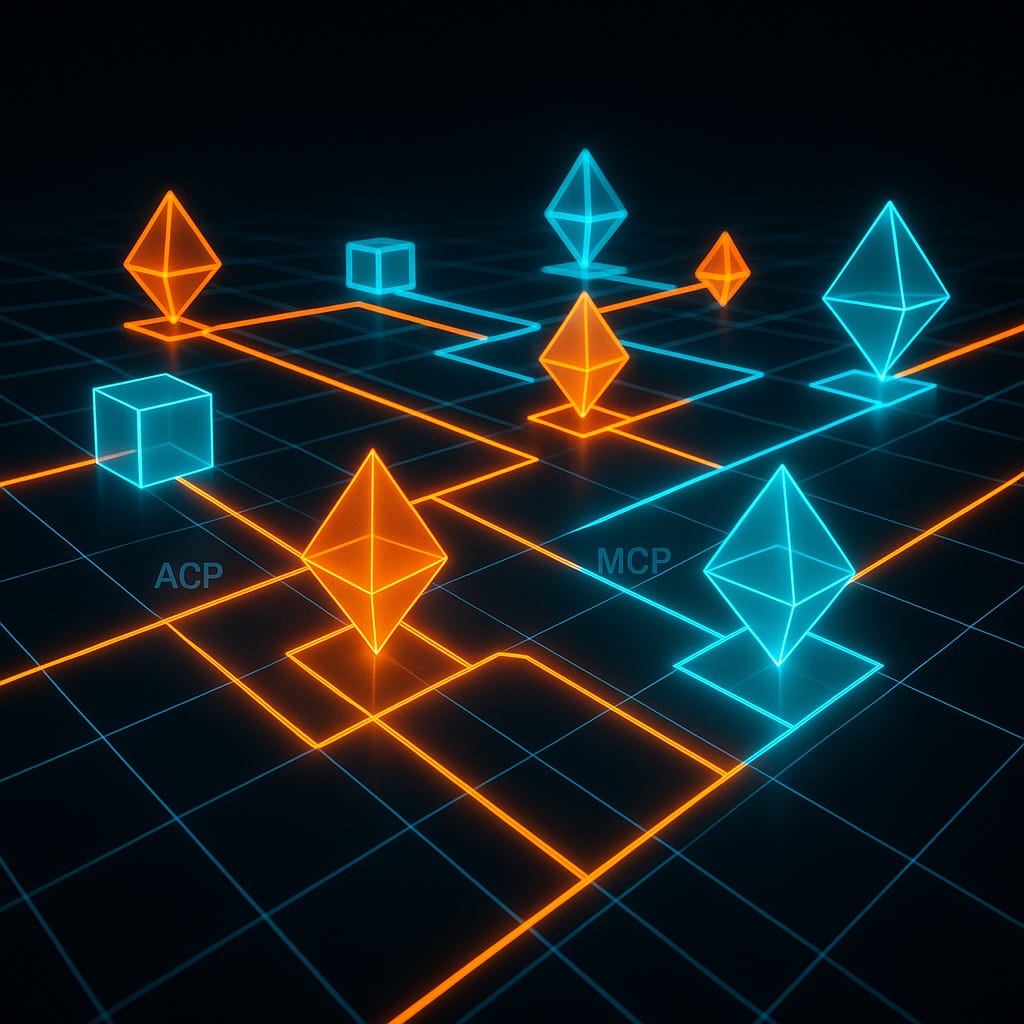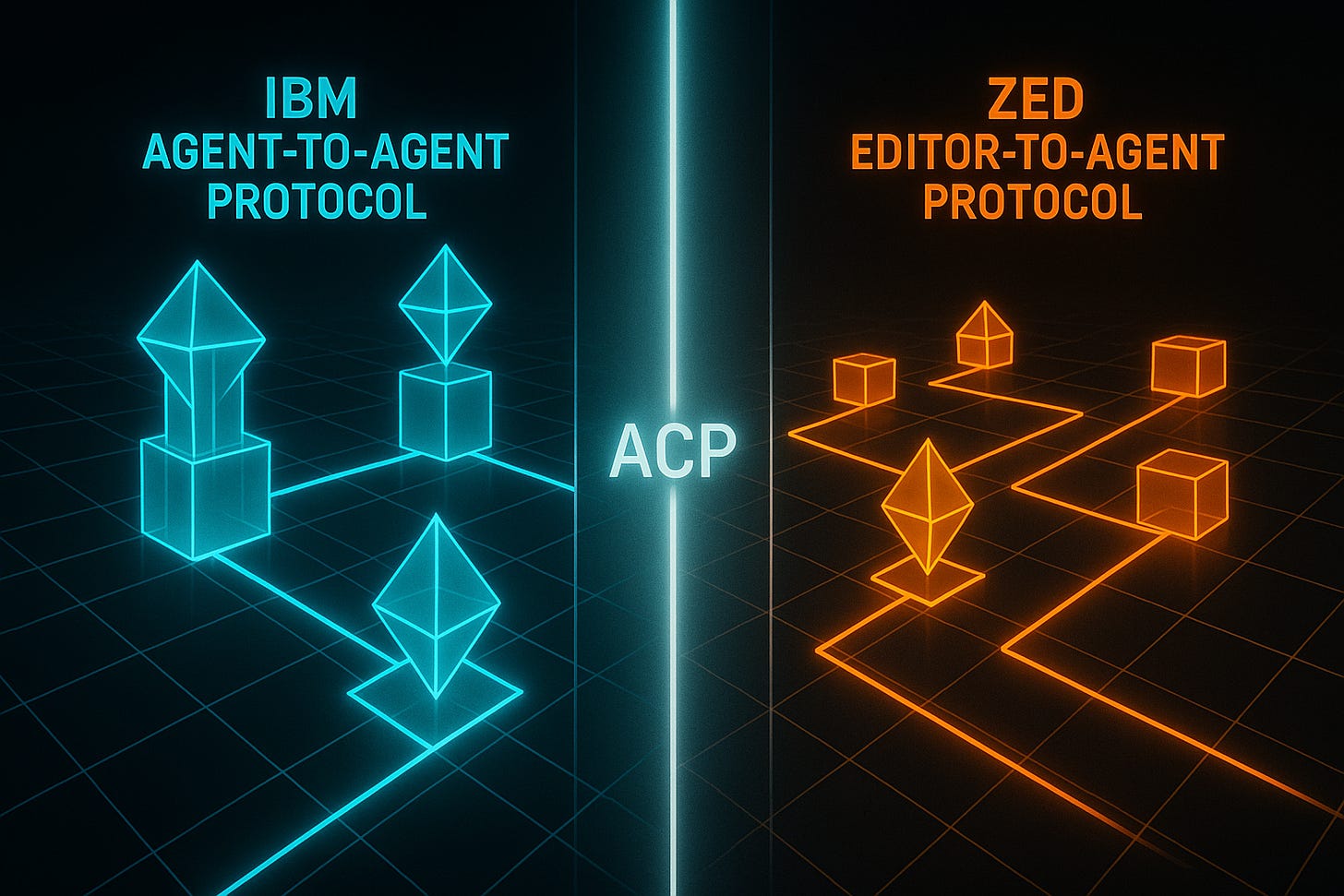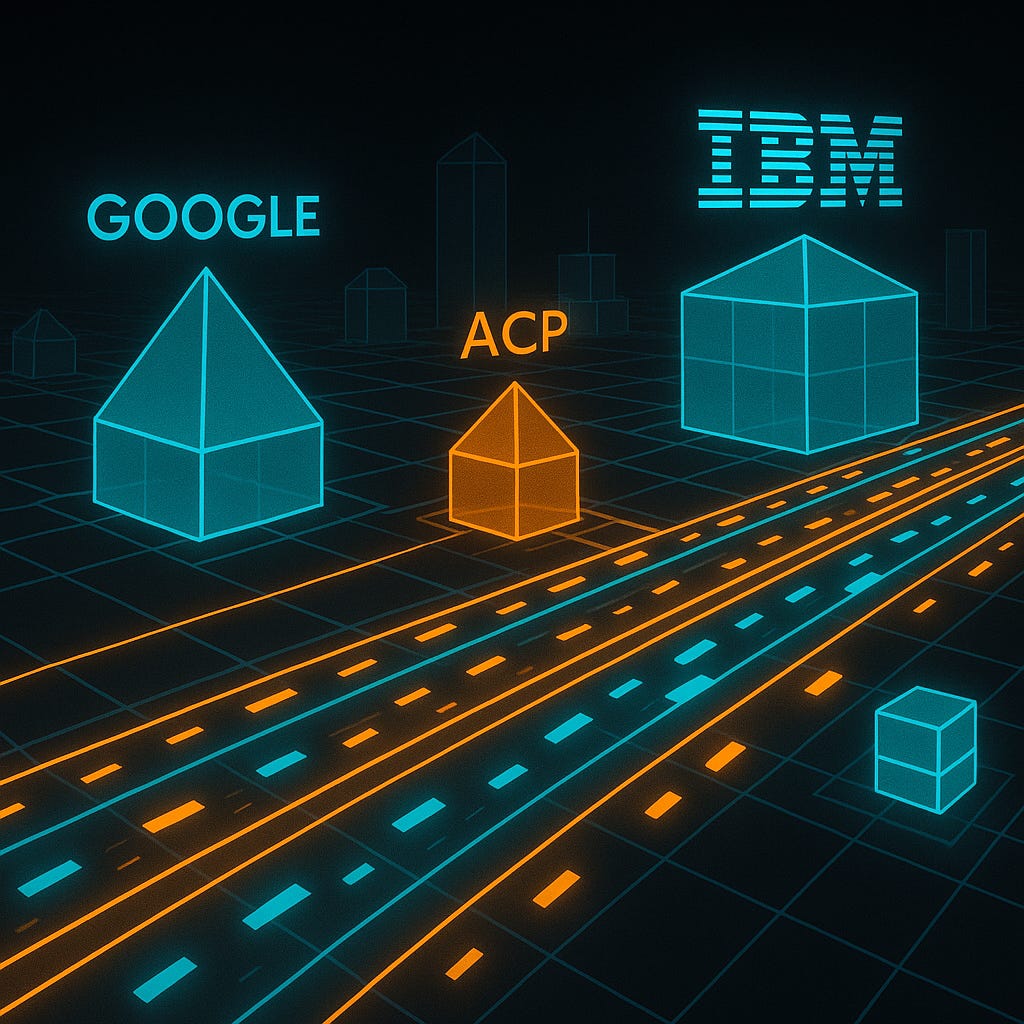Protocols sound boring. They're not, and they are the thing we all should be paying attention to right now. I'd bet that at least $20 billion of Anthropic's $183 billion valuation comes from its leadership with MCP.
The LLM arms race isn't over. But the players? Pretty much set. Unless some Chinese model drops a bombshell or quantum computing suddenly works, we've got our roster:
Anthropic owns business and coding
OpenAI dominates consumer
Gemini runs Google's ecosystem
Llama powers Meta's everything
Everyone else fights for scraps
The real battle now? Protocol dominance. And it's wide open.
MCP Started This Party
Model Context Protocol changed the landscape when Anthropic launched it in November 2024. But it didn't really take off until May 2025. Simple idea, massive impact: Let AI models talk to any tool through standardized connections.
Suddenly your AI could read your Postgres database. Check your GitHub repos. Query your CRM. All through one clean protocol.
The result? MCP became the TCP/IP of AI systems. Every serious AI tool now supports it. Claude Desktop, VS Code extensions, Zed editor—they all speak MCP.
But MCP handles model-to-tool connections. What about agent-to-agent communication?
Enter ACP: The Protocol That Was Built Twice
Here's where it gets interesting. Agent Client Protocol isn't one protocol. It's two. Built independently. For different problems. Both called ACP.
Confused? Understandable.
IBM's Agent Communication Protocol emerged in March 2025. Their vision: "the HTTP of agent communication." Let agents built on LangChain talk to ones on CrewAI. Or AutoGen. Or whatever framework you're using.
Then Zed Industries launched their Agent Client Protocol in August 2025. Different problem: Let any code editor work with any AI coding assistant. Switch from Gemini to Claude without changing your setup.
Same acronym. Complementary purposes. Both critical.
The IBM Story: Agents That Actually Collaborate
IBM's approach tackles the exponential integration problem. Got 10 agents? That's 45 potential connections without standards. Got 100? You're looking at 4,950 integration points.
Their ACP turns that exponential nightmare into a linear problem. One interface per agent. Done.
Kate Blair demonstrated this at AI Dev 25 in March. Showed agents from different frameworks collaborating seamlessly. Research agent finds data, analysis agent processes it, writing agent creates reports. All different vendors. All talking through ACP.
The Linux Foundation saw the potential immediately. IBM contributed ACP alongside their BeeAI platform in March 2025.
Google Tried to Fight, Then Joined
Google's response? Agent2Agent (A2A) protocol in April 2025. Similar goals, different approach. Competition looked inevitable.
Until it wasn't.
On September 1, 2025, something unprecedented happened. IBM's ACP team merged with Google's A2A team under Linux Foundation governance. Six months from competition to collaboration.
Why? Because fragmentation kills ecosystems. Both teams recognized that protocol wars would hurt everyone building multi-agent systems.
Zed's Different Angle: Editor Freedom
Zed's ACP solves a different problem. Tired of being locked into one AI coding assistant? Their protocol fixes that.
Built with Google's Gemini CLI as the reference implementation, it lets you switch AI assistants like changing themes. Anthropic's Claude Code? Supported through community bridges. Neovim? Works through the CodeCompanion plugin.
Different problem, same pattern: Open protocols beat vendor lock-in.
The Numbers Don't Lie
The vendor support is exploding. The unified ACP/A2A protocol has over 50 technology partners:
Every major cloud provider
Microsoft's integrating it into Azure AI Foundry
SAP's Joule, Box's AI Agents, implementations from Atlassian, MongoDB, PayPal
Global consultancies from Accenture to Wipro
But the real tell? Development velocity. SDKs in Python, TypeScript, and Rust. Comprehensive documentation. Example code everywhere.
Theoretical to production-ready in 6 months.
Why This Matters More Than Model Performance
Don't get me wrong—model improvements are significant. GPT-4o's multimodal capabilities were impressive. Claude 3.5 Sonnet's coding performance genuinely moved the needle. These advances matter.
But here's the thing: Models affect fewer entry points. There are only so many vendors with only so many models. Models are expensive, move slowly, require massive resources.
Protocols? They affect tens of thousands of entry points. Every developer integration. Every tool connection. Every agent handoff. And they have many contributors working in parallel.
That's why protocols compound faster than models.
Same pattern emerging with AI protocols. MCP gave Anthropic first-mover advantage in model-to-tool connections. ACP could do the same for agent orchestration.
The Land Rush Is On
Here's what excites me: The agent protocol space is wide open. No clear winners yet. Small players with good tech can capture disproportionate value.
Zed editor exemplifies this. Tiny team, great technology, partnering with Google on ACP. Their protocol work could be worth more than their editor business.
Why? Because protocols compound. Early adoption creates network effects. More developers use your protocol, more tools support it, more valuable it becomes.
ACP vs A2A: The Merge That Made Sense
The IBM ACP / Google A2A merger wasn't just corporate politics. It was strategic necessity.
IBM's ACP focused on HTTP-based communication. RESTful APIs, OAuth 2.1 security, standard web patterns. Google's A2A emphasized real-time coordination. Message queuing, event streaming, low-latency communication.
Together? They cover the full spectrum of agent communication needs. The merged protocol supports both patterns, letting developers choose the right tool for each job.
What You Should Be Watching
Three areas deserve attention:
Protocol adoption velocity. How fast are developers implementing ACP? GitHub stars, package downloads, conference mentions—track the momentum.
Enterprise deployment patterns. Which companies are betting big on multi-agent systems? Their success validates the protocol's value.
Tooling ecosystem development. IDEs, debugging tools, monitoring platforms—the infrastructure that makes protocols practical.
Early indicators look promising. Educational partnerships are emerging around ACP training. Some universities are beginning to incorporate multi-agent development into AI curricula. Developer familiarity is growing gradually.
The Bottom Line
Model performance matters. But protocol adoption creates lasting competitive advantage.
MCP demonstrated this. Anthropic's early investment in infrastructure standards gave them positioning that compounds with each new integration. ACP offers similar opportunities for agent communication.
The strategic window won't stay open long. Protocol consolidation happens quickly when integration pain becomes acute. And multi-agent integration pain is very acute.
Smart organizations track protocol adoption, not just model benchmarks. The companies that shape how AI systems communicate will influence the next decade of AI development.
Do you know ACP? You will. Because building serious multi-agent systems increasingly requires it.
Related Reading:
MCP Changes Everything - My original deep dive on Model Context Protocol
Multi-Agent AI Orchestration in Practice - Real-world orchestration experiences






